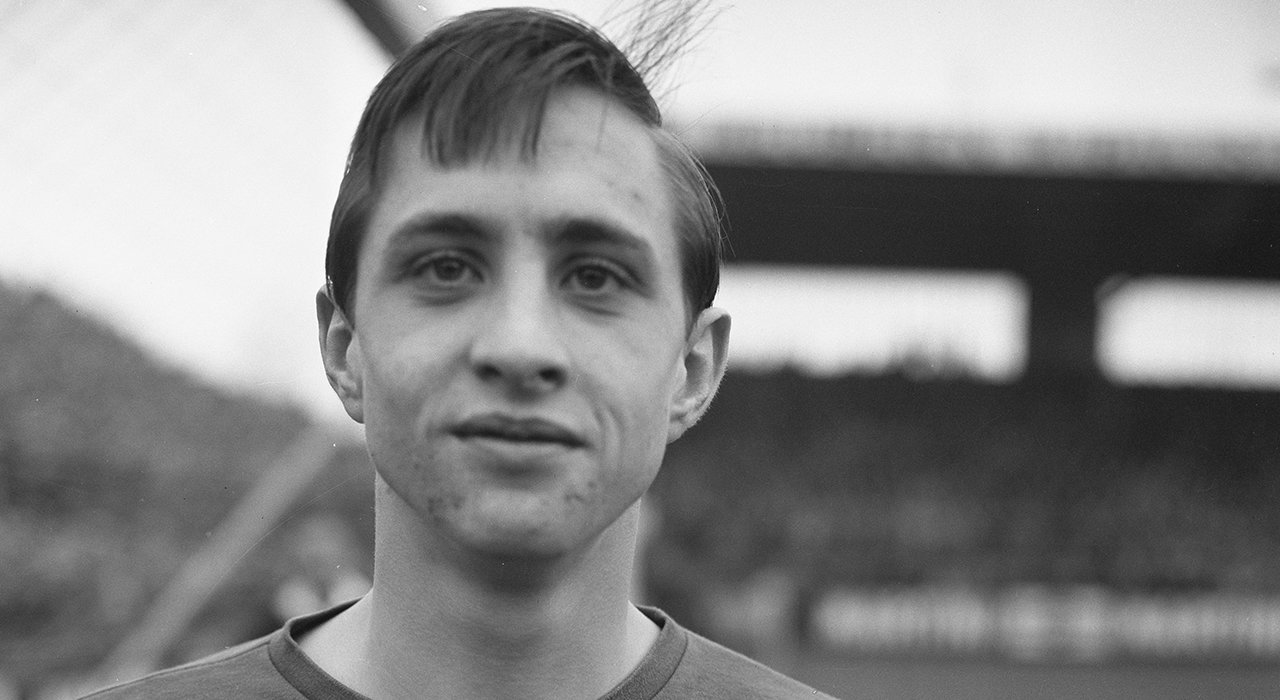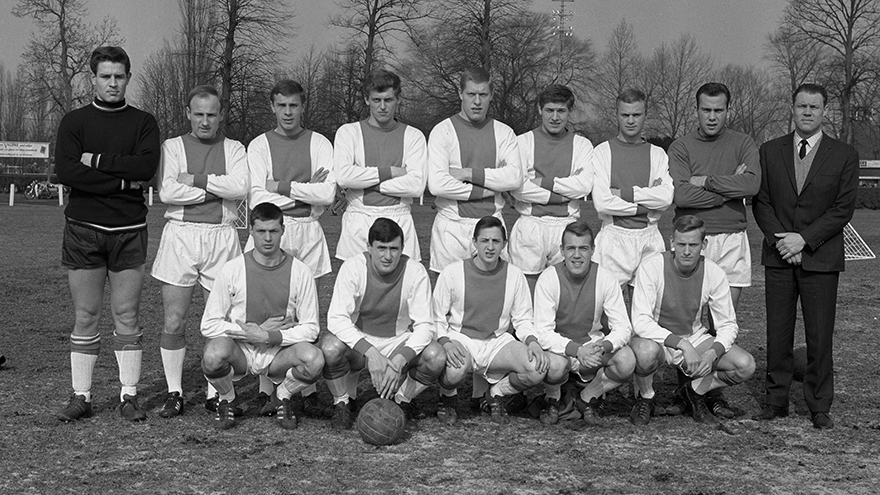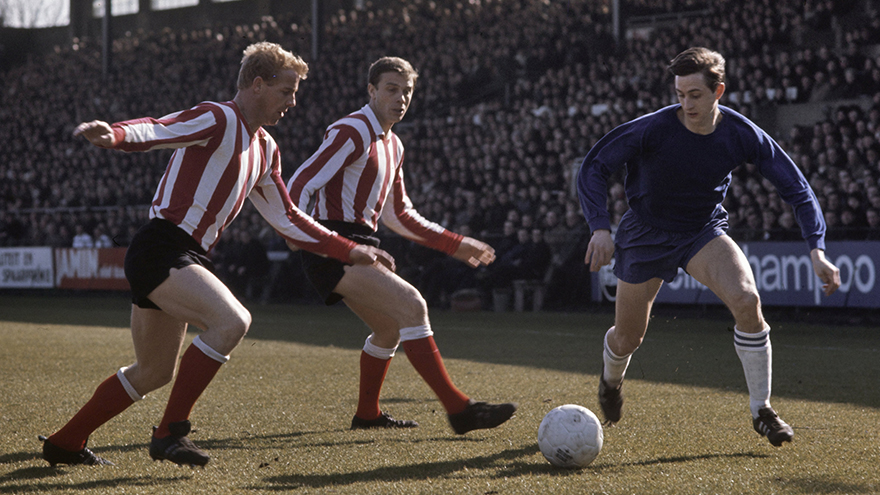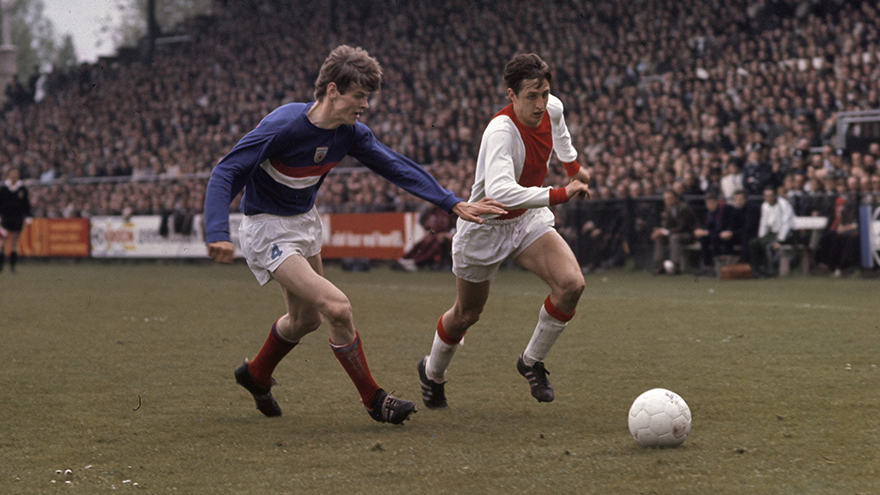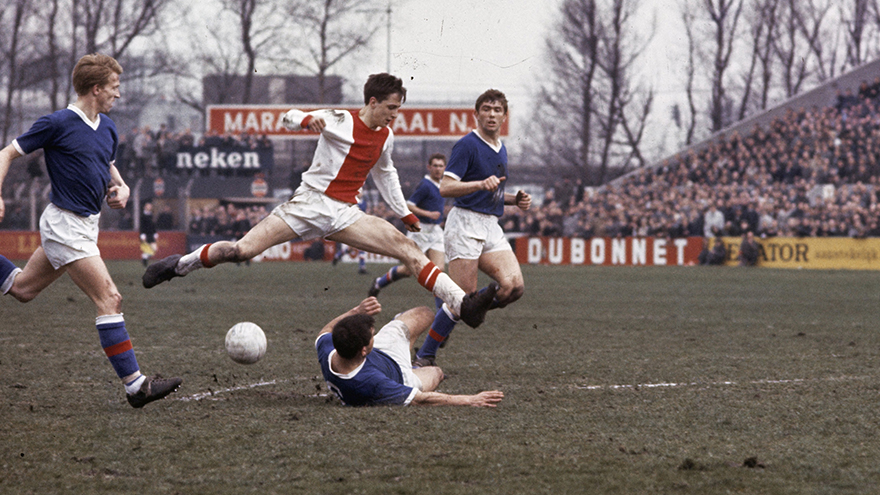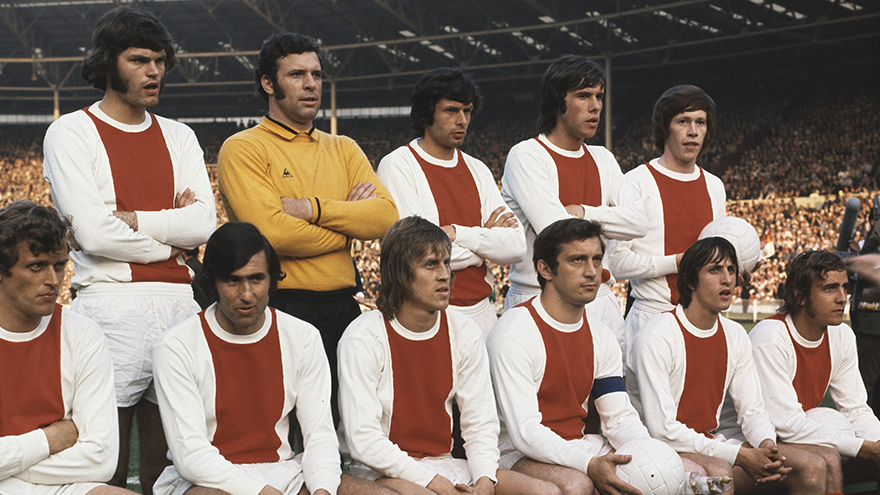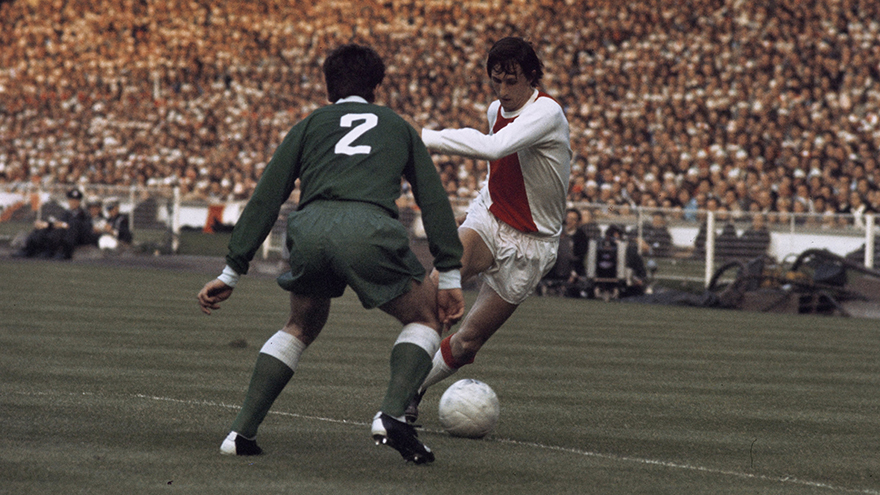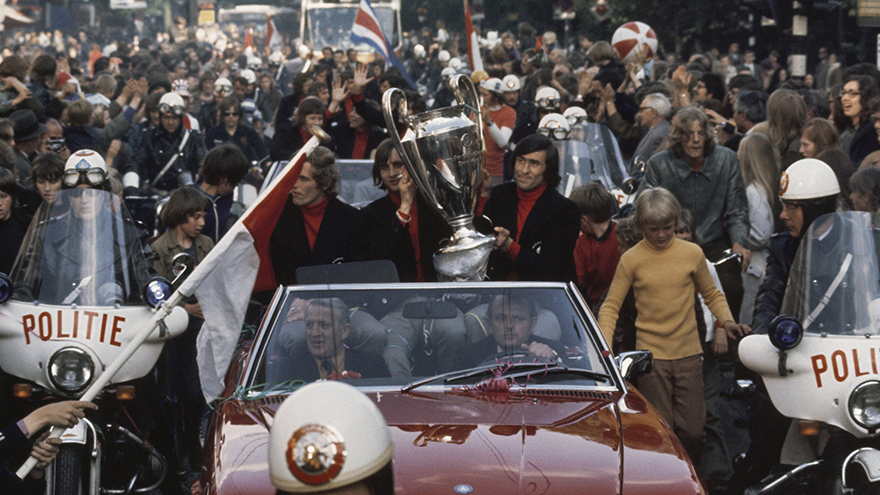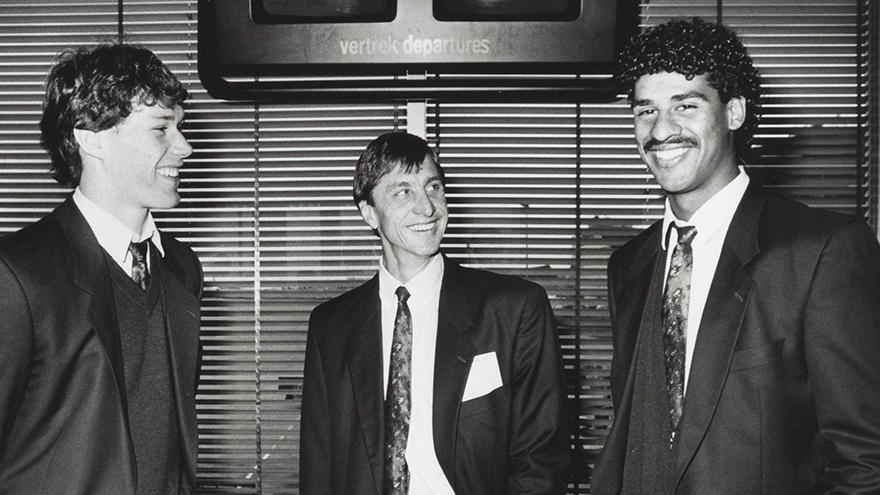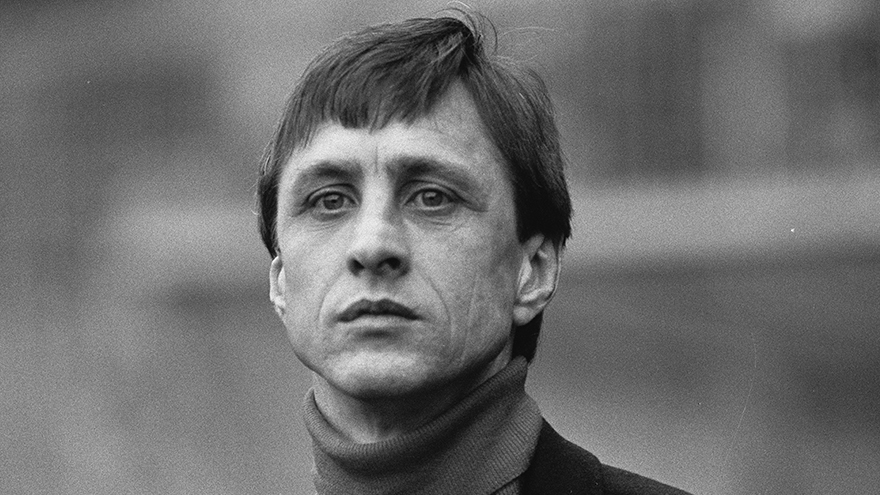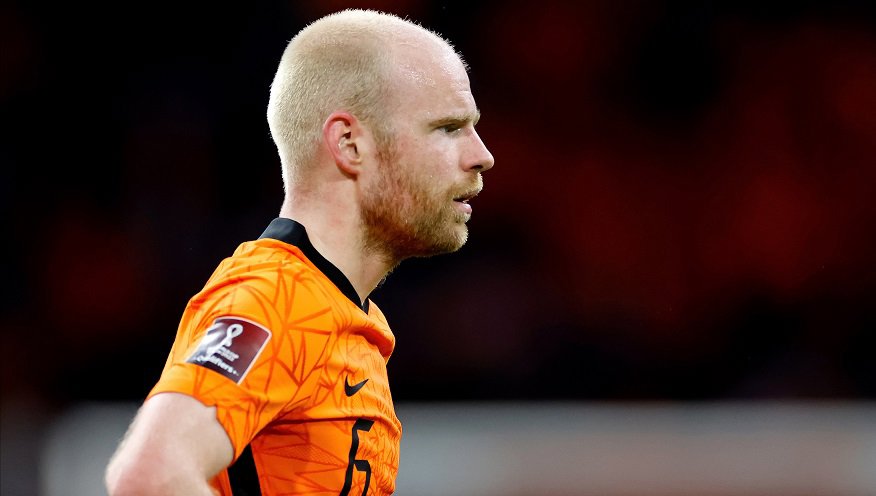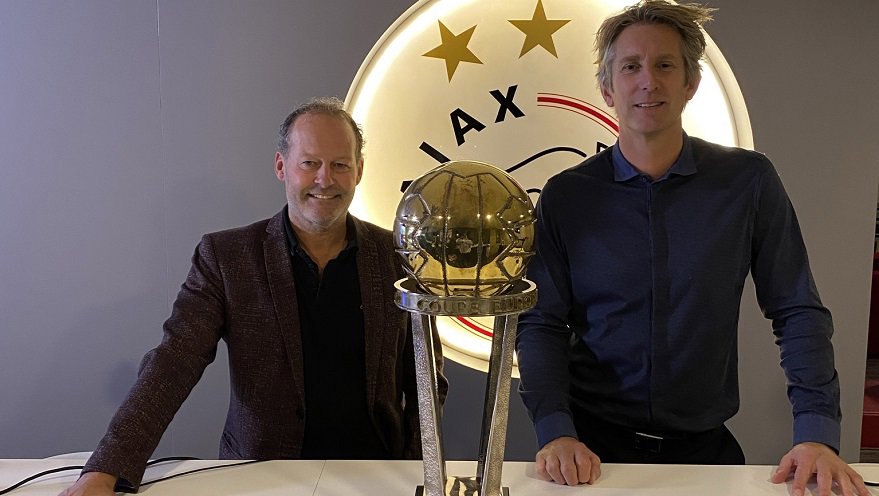Hendrik Johannes Cruijff. Born on April 25, 1947, in the burgerziekenhuis on Linnaeusstraat in Amsterdam. Raised in Betondorp, a stone's throw from De Meer stadium, the stage on which he would later set the football world alight.
Youth coach Jany van der Veen first saw little Johan’s talent, or "Jopie" as his mother always calls him, with the ball at his feet in his own neighborhood in Amsterdam. Cruijff was invited to play football for Ajax, without even needing to go on trial. He had plenty of talent. At the age of ten, he was admitted to the club’s youth academy, where his mother, Nel, already worked, doing various odd jobs.
Talent
In 1963, the then sixteen-year-old talent signed a full-time contract, becoming the second player in professional football to so, after his teammate Piet Keizer. Ajax was assured of Cruijff’s services for the coming four years, thanks to the new deal.
Following his new contract, he made his official debut against GVAV on November 15, 1964. Although Ajax lost 3-1, ‘Jopie’ scored the only goal for the Amsterdam side on the day. The team were in the midst of a mediocre season at the time. Manager Vic Buckinham struggled to get the team going and eventually returned to England. His tenure is followed up in 1965 by Rinus Michels. It was at that time that Cruijff began to find success.
Despite Johan’s form, the 1964/65 season ended poorly. Ajax narrowly avoided relegation, finishing fourth from the bottom, just four points ahead of NAC.
Soon after, though, the tide turned in Amsterdam. Ajax were Dutch champions in 1966. Cruijff, in spite of his teenage status, became the leader in the team, brimming with football talent and genius. It all came together in the 1966/1967 season, with Cruijff finishing as top scorer in the league with 33 goals in an Ajax team that scored 122 times in the league. In 1969, Ajax broke on to the European stage. Cruijff and his teammates reached the final of the Europa Cup 1 but were hopeless against AC Milan in the final. Still, the feeling remained that Ajax were headed to the very top of world football.
Success
Then came the 1970s. Ajax’s dominance in the early part of the decade had no limits. With Cruijff at the helm, Ajax won their first Europa Cup 1 in 1971. They did not have to wait long for the second, which came a year later. The same went for the third, in 1973. The Club World Cup and the European Super Cup are also added to the trophy cabinet, seemingly effortlessly. The team had simply decided that they had wanted to win everything there was to be won. In that time, Ajax was unbeatable.
In 1973, Cruijff left Amsterdam to join FC Barcelona. To this day, ‘El Salvador’ (the Redeemer) is revered in Spain, despite only winning one trophy in Catalonia. It was ex-Ajax manager Rinus Michels who brought him to the Camp Nou. “I was always got fantastic treatment from Michels. He taught me the things that have made me who I am”, said Cruijff about his former manager.
While at Barcelona, Cruijff was selected twice as European Footballer of the Year, an honor he had also earned in 1971 while still at Ajax. At the age of 31, he played his final match for FC Barcelona in 1978. After a brief stint in the United States, Cruijff returned to Ajax in the 1980s. On December 6, 1981, he made his second debut for the club against HFC Haarlem at 34 years of age. With a sublime lob over goalkeeper Edward Metgod, Cruijff let everyone know that his talent had not diminished. The following two years resulted in two more Dutch league titles for Ajax and the end of Cruijff’s time at Ajax. After one season at Feyenoord, in which he won the double, Cruijff hung up his boots for good.
Management
Ajax’s legendary number fourteen returned to manage his former team in 1985. With a squad featuring the likes of Frank Rijkaard, Sonny Silooy, Marco van Basten, Ronald Koeman, and Gerald Vanenburg, Cruijff was not lacking talent in his side. Despite not winning the league in his three years in charge, he did win the Dutch Cup on two occasions, in addition to the European Cup Winners Cup in the 1986/1987 season (later known as the Europa League).
Thanks to his vast array of achievements, Cruijff will always be linked to Ajax. On his sixtieth birthday, the club decided to permanently retire the number 14. “A tribute to a unique footballer”, said chairman John Jaakke in 2007.
As of 2018, Ajax’s stadium has been renamed the Johan Cruijff ArenA. Even after his time as a player and manager had come to an end, Cruijff remained a supporter – through the good times and the bad. That is what makes him a true ‘Ajacied.’ Forever.
